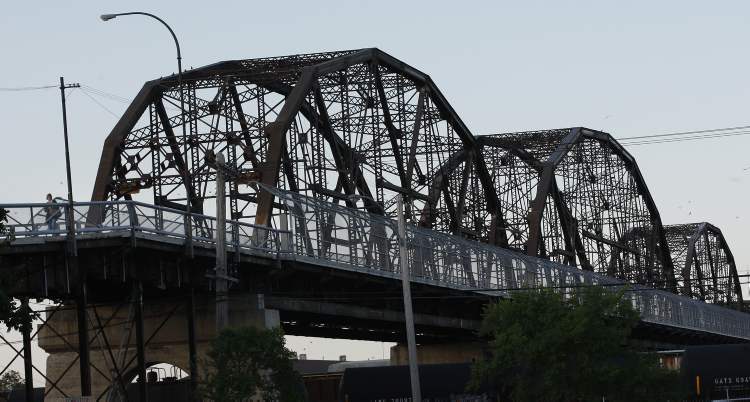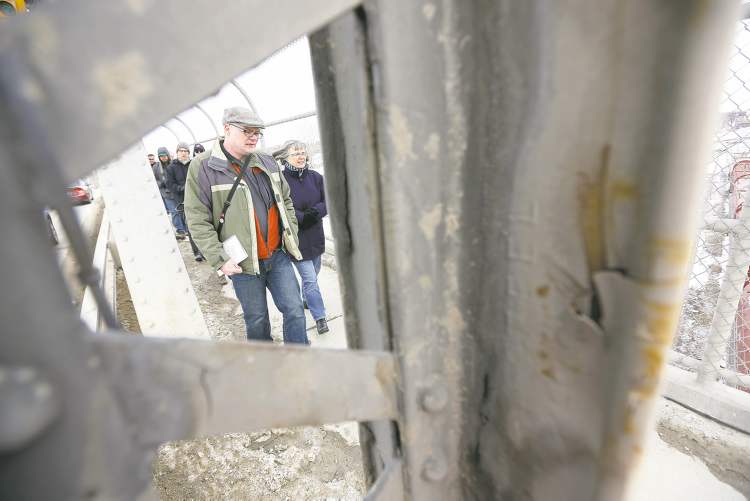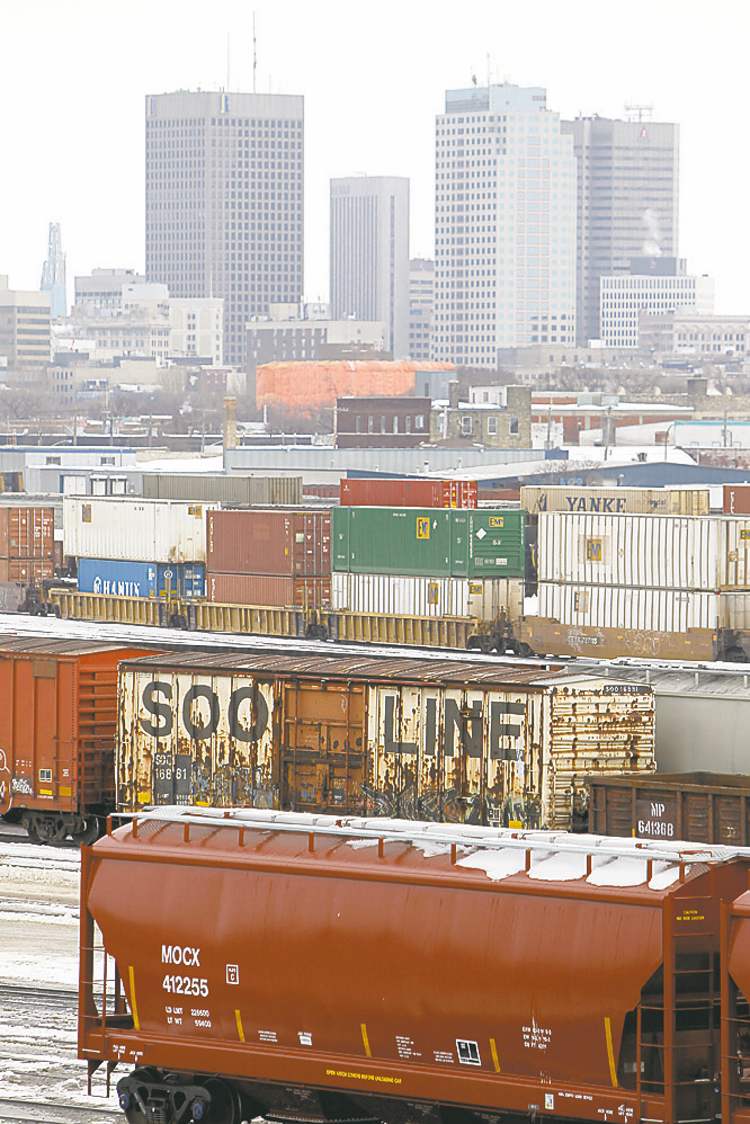Urban myth or reality, Arlington Bridge’s history is still fascinating
Advertisement
Read this article for free:
or
Already have an account? Log in here »
To continue reading, please subscribe:
Monthly Digital Subscription
$0 for the first 4 weeks*
- Enjoy unlimited reading on winnipegfreepress.com
- Read the E-Edition, our digital replica newspaper
- Access News Break, our award-winning app
- Play interactive puzzles
*No charge for 4 weeks then price increases to the regular rate of $19.00 plus GST every four weeks. Offer available to new and qualified returning subscribers only. Cancel any time.
Monthly Digital Subscription
$4.75/week*
- Enjoy unlimited reading on winnipegfreepress.com
- Read the E-Edition, our digital replica newspaper
- Access News Break, our award-winning app
- Play interactive puzzles
*Billed as $19 plus GST every four weeks. Cancel any time.
To continue reading, please subscribe:
Add Free Press access to your Brandon Sun subscription for only an additional
$1 for the first 4 weeks*
*Your next subscription payment will increase by $1.00 and you will be charged $16.99 plus GST for four weeks. After four weeks, your payment will increase to $23.99 plus GST every four weeks.
Read unlimited articles for free today:
or
Already have an account? Log in here »
Hey there, time traveller!
This article was published 04/03/2013 (4649 days ago), so information in it may no longer be current.
Stand in the middle of the Arlington Bridge in marrow-freezing winds and imagine the Blue Nile flowing below.
True, there’s grimy freight cars and boxcars down there on railway tracks as far as the eye can see, but try to picture a warm and sunny day in the Sudan.
“There’s an urban legend that the Arlington Bridge was meant to go over the Nile,” local blogging history buff Christian Cassidy told a pack of media and architects Sunday afternoon as he led a tour of the once-again endangered and apparently moribund bridge.

That’s supposedly why the city got such a good deal back in 1910 from Cleveland Bridge of the United Kingdom — 20 per cent below local bidders, including shipping the materials from overseas.
Cassidy suspects that while the Nile was too wide for a bridge, there is evidence it was meant to span the Blue Nile in the Sudan, and Winnipeg lucked out when that deal fell through.
In his blog West End Dumplings, Cassidy has chronicled the history of the bridge, which, a city report said late last month, needs to be replaced in less than 10 years.
That’s hardly the first time that song has been sung about the bridge, said Cassidy — the first time he could trace was in 1946, when city Coun. John Blumberg called for the bridge to be replaced.
In 1967, city council said the bridge was at the end of its functional life, and repeated that chorus in the early 1990s. The 1967 death knell coincided with a decade of considering a new bridge connecting Sherbrook with McGregor that never happened.
Each time, the city ponied up big bucks to fix the Arlington Bridge, Cassidy said.

Talk of spanning the rail yards at Arlington Street started back around 1905, when the city had a bridge on Main Street providing the only north-south streetcar connection in Winnipeg.
The Salter Bridge was wooden and rickety, and the grade-level crossing on McPhillips Street was way out in the countryside back then, he said.
Archibald McArthur, head of the city’s bridge committee, envisioned Arlington becoming a second Main Street, the amateur historian related. It failed a couple of financing referenda before finally getting the green light in 1910 when packaged with other big-ticket projects.
The bridge was supposed to have decorative lights — no, don’t bother looking for the switch to turn them on, there was no money to install them — and after construction delays, people were so ‘browned off’ only McArthur showed up to watch the first traffic go over the bridge, Cassidy said.
The streetcar tracks were ripped out in 1926 without ever having been used.
There was all sorts of squabbling between city bosses and the unions over running streetcars over the steep new bridge — such squabbling, it goes without saying, is unknown-of today.

“They said it would be suicide taking a street-car full of people down the other side when there were through streets on either side,” Cassidy said. The city even proposed, without success, stationing flag people at the foot of the bridge to stop vehicle traffic as street cars came down the steep incline.
“No streetcar ever ran over the bridge,” Cassidy said.
nick.martin@freepress.mb.ca

Nick Martin
Former Free Press reporter Nick Martin, who wrote the monthly suspense column in the books section and was prolific in his standalone reviews of mystery/thriller novels, died Oct. 15 at age 77 while on holiday in Edinburgh, Scotland.
Our newsroom depends on a growing audience of readers to power our journalism. If you are not a paid reader, please consider becoming a subscriber.
Our newsroom depends on its audience of readers to power our journalism. Thank you for your support.


